
Figure F5. Core photographs of lithologies of volcanic-sedimentary Unit 1. Generalized stratigraphic positions are shown on Figure F3A. A. Unique sample of a graded, laminated, medium- to fine-grained ferruginous clastic sediment, possibly deposited by a turbidity current, from a setting some distance from Site 1277 (interval 210-1277A-5R-2, 33–43 cm). B. Piece of the lowermost basalt (inferred Flow 1) showing tectonic brecciation and infill of calcite-cemented volcaniclastic sand and silt. Unfilled subvertical cracks are lined with calcite spar. Note the thin later-stage calcite veins that cut both the basalt and the calcite-cemented infilling sediment (interval 210-1277A-5R-1, 24–57 cm). C. Large clast of serpentinized harzburgite within mass flow, cut by subvertical calcite-filled fractures (interval 210-1277A-4R-2, 107.5–130.5 cm). D. Angular clasts of altered sheared serpentinized harzburgite (serpentinite mylonite) set in a calcareous matrix and cut by small irregular calcite veins (interval 210-1277A-3R-4, 118.5–132.5 cm). E. Pale gabbroic clast within serpentinite-bearing debris flow (interval 210-1277A-4R-2, 30–53 cm). F. Altered rounded serpentinized harzburgite clast set in a poorly sorted matrix including smaller clasts of serpentinite, later cut by calcite veins (interval 210-1277A-4R-1, 51–74.1 cm). G. Poorly sorted granulestone cemented by calcite spar overlain in a primary contact with basaltic Flow 2 (interval 210-1277A-3R-4, 60–80 cm). H. Fractured massive basalt in which the internal cavity was sufficiently large to allow an infill of layered calc-siltite and basalt detritus to form (Flow 2) (interval 210-1277A-3R-2, 102–122 cm). I. Fractured massive basalt. The fracture is infilled with calcite spar and detrital material, with little relative movement of the opposing walls of the fracture (Flows 2 and 3) (interval 210-1277A-3R-2, 31–54 cm). J. Brecciated massive basalt with spalled fragments of green hyaloclastite and calcite spar cement. Unusually, the upper part of the interval is reddened as a result of apparent seafloor oxidation (Flow 2) (interval 210-1277A-3R-2, 126–149 cm). K. Fractured massive basalt with hyaloclastite clast and calcite spar cement (Flow 2) (interval 210-1277A-3R-2, 81–101 cm). L. Spalled interlava hyaloclastite cemented by calcite spar. Little compaction took place prior to cementation (Flow 3) (interval 210-1277A-3R-1, 8.5–32 cm). M. Basalt showing fracturing and infill with hyaloclastite and basalt detritus (Flow 3) (interval 210-1277A-2R-2, 69–73 cm). N. Sheared and brecciated gabbro (interval 210-1277A-2R-1, 96–107 cm). O. Graded conglomerate-breccia cemented by calcite spar (interval 210-1277A-1W-2, 91–105 cm). P. Basalt (possibly pillow lava) with pocket of spalled hyaloclastite cemented by calcite spar (Flow 1) (interval 210-1277A-1W-2, 20–40 cm). Q. Basalt and green hyaloclastite breccia cut by extensional fracture infilled with two generations of calcareous internal sediment (interval 210-1277A-1W-1, 40–60 cm). R. Red-brown ferruginous crust above basalt clasts that are set within green hyaloclastite; from the highest recovered levels of the succession at Site 1277 (interval 210-1277A-1W-1, 1–28 cm).
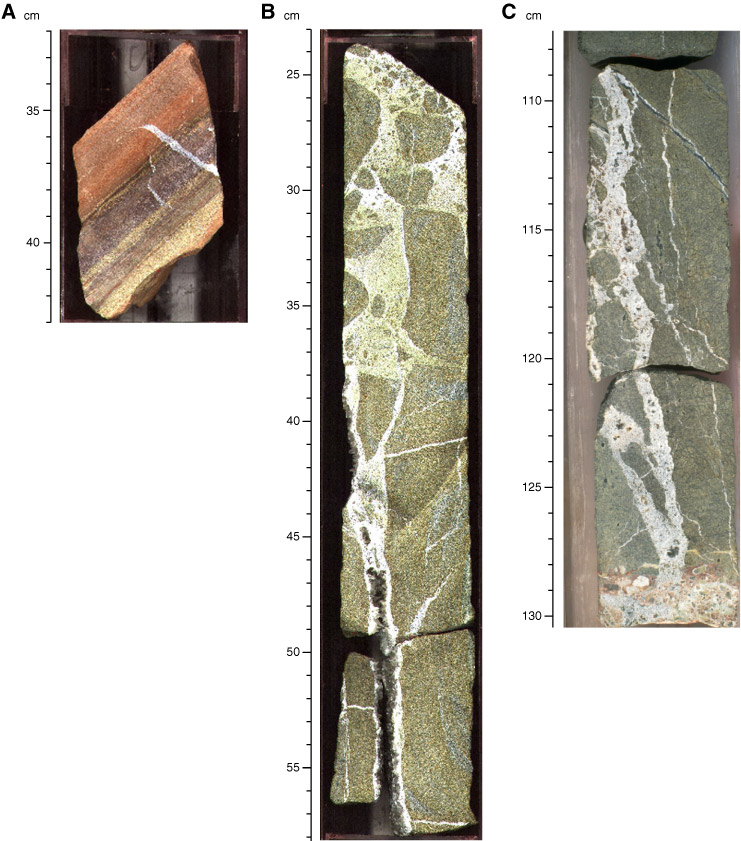
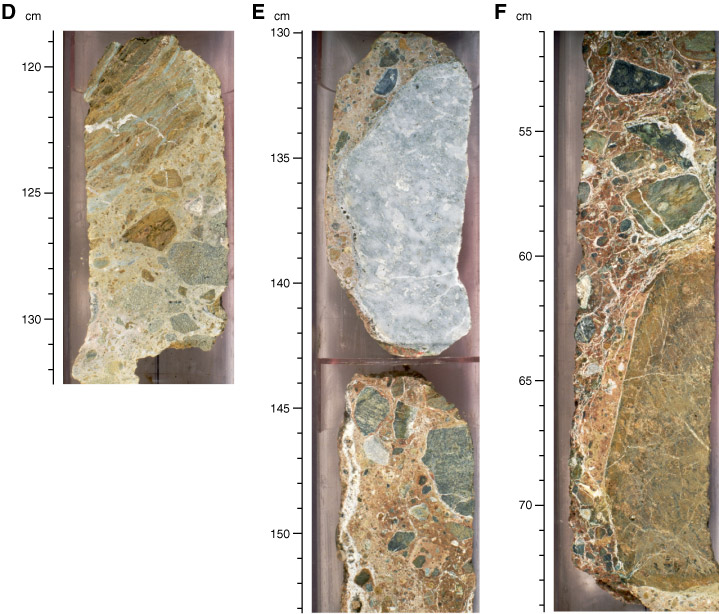
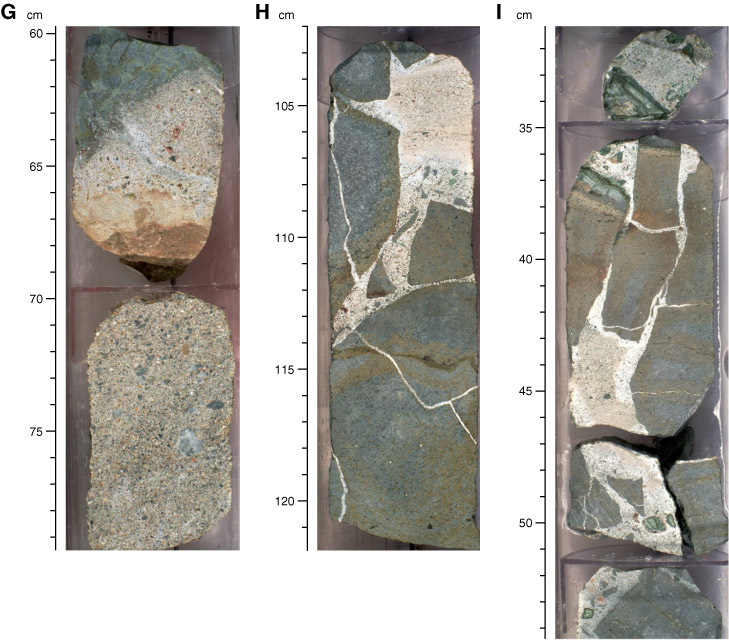
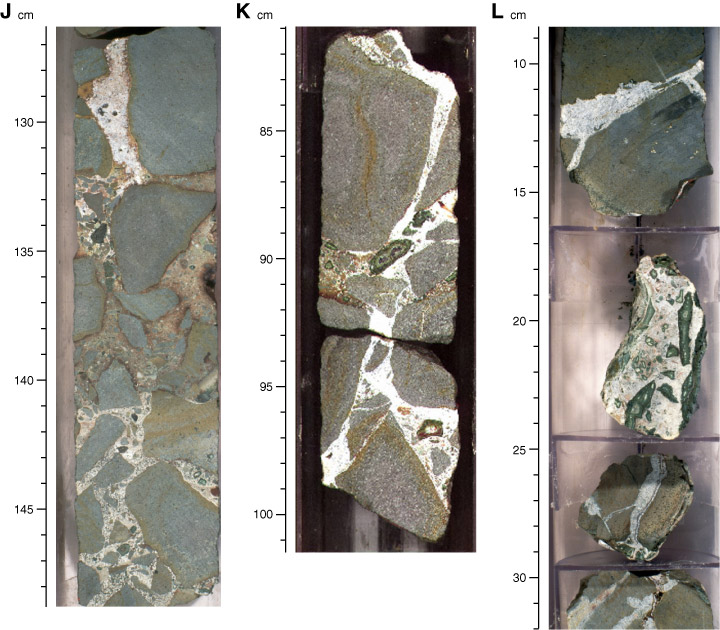
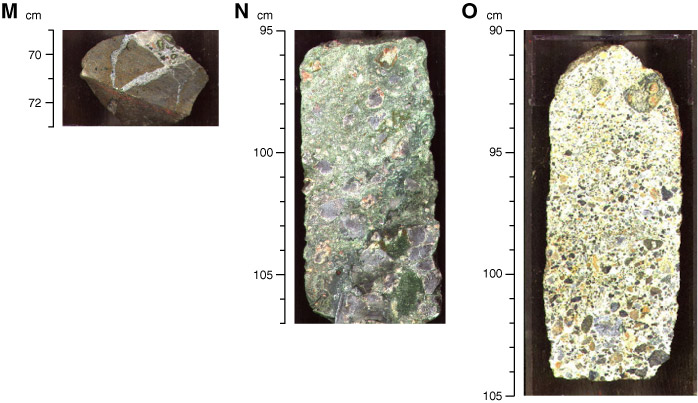
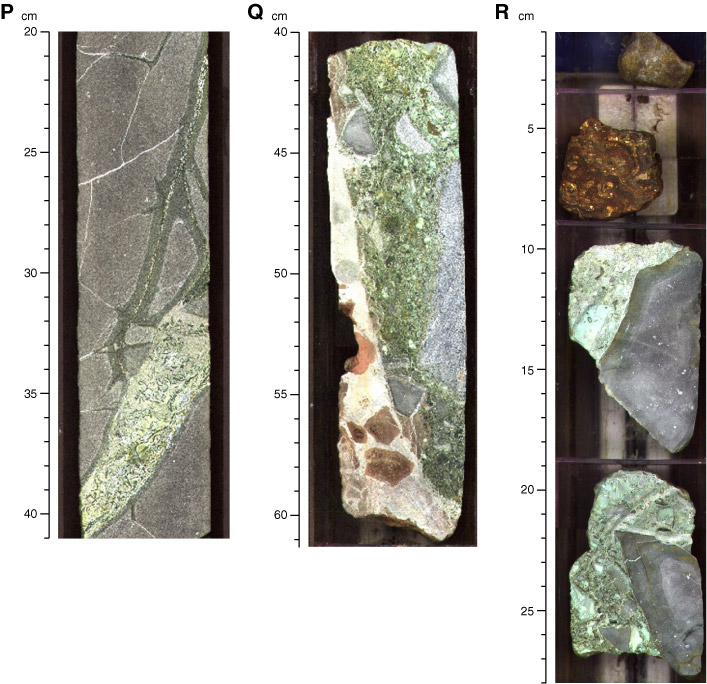







![]()